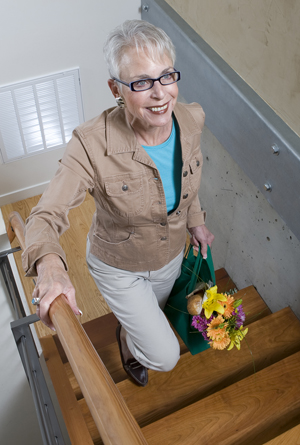Exercise can lower blood sugar, help control weight, and boost your mood. It can also improve blood flow, lower blood pressure, help you use oxygen better, and improve heart health. Even a small amount of regular activity can have a big impact on your health.
What can exercise help?
-
Blood sugar. Regular exercise improves blood sugar control by helping your body use insulin.
-
Mental and emotional health. Physical activity eases stress and helps you sleep better.
-
Heart health. With regular exercise, you can reduce your risk for heart disease and high blood pressure. You can also improve your cholesterol and triglyceride levels. Muscles after exercise are better able to use up any stored fat.
-
Weight. Exercise helps you lose fat, gain muscle, and control your weight.
-
Health of blood vessels and nerves. Activity helps lower blood sugar. This helps prevent damage to blood vessels and nerves. The damage can cause problems with your brain, eyes, feet, and legs.
-
Finances. If you manage your blood sugar, you may spend less on health care.
2 types of exercise
Two types of exercise help your body use blood sugar. Experts advise both types of exercise for people with diabetes:
-
Aerobic exercise. This is a rhythmic, repeated, continued movement of large muscle groups for at least 10 minutes at a time. You should do this about 30 minutes a day on most days of the week. Examples include walking, biking, jogging, swimming, water aerobics, and many other sports.
-
Strength training. This is when you use muscles to move weight or work against resistance. You can do it with free weights, machines, or resistance tubing. Or you can use your own body weight. Aim for 2 to 3 sessions of resistance exercise each week. It’s best to skip a day in between.
A goal to shoot for
Your main goal is to become more active. Even a little bit helps. Choose an activity that you like. Walking is a great form of exercise that everyone can do. First, talk with your doctor about any limits you may have. Then aim for 150 minutes a week of physical activity. Don’t let more than 2 days go by without exercise. When you're sitting for long periods of time, get up for a bit of light activity at least every 30 minutes.
Adding activity to your day
Being more active doesn’t have to be hard work. Try these to get more activity into your day:
-
Take the stairs instead of the elevator.
-
Garden, and do housework and yard work.
-
Choose a parking space farther from the store.
-
Walk to talk to a coworker instead of calling.
-
Take a 10-minute walk around the block at lunch.
-
Walk to a bus stop a little farther from your home or office.
-
Walk the dog.


